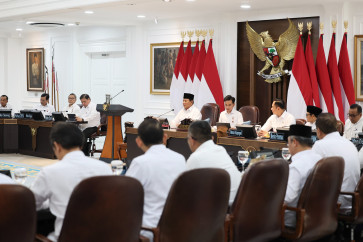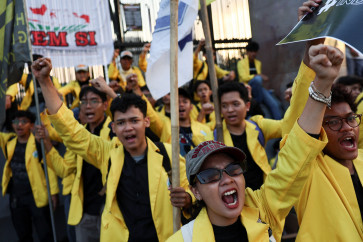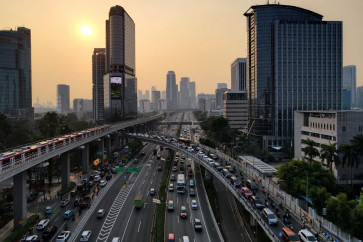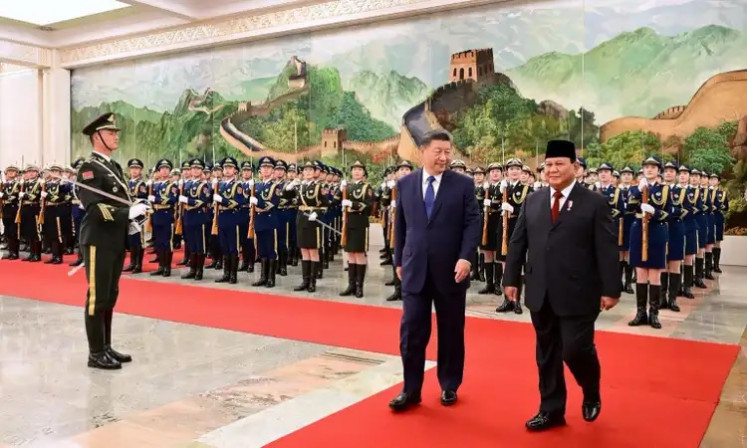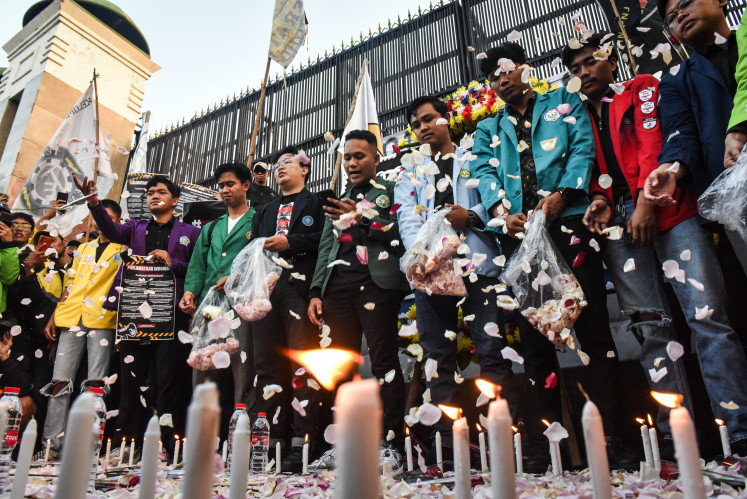Popular Reads
Top Results
Can't find what you're looking for?
View all search resultsPopular Reads
Top Results
Can't find what you're looking for?
View all search resultsSurfers in Mentawai pay fees for waves
Surfers intending to enjoy big waves in Mentawai, West Sumatra, need to pay extra fees, albeit meager ones, as the local administration is moving to boost its income from tourism
Change text size
Gift Premium Articles
to Anyone
S
urfers intending to enjoy big waves in Mentawai, West Sumatra, need to pay extra fees, albeit meager ones, as the local administration is moving to boost its income from tourism.
Starting on Aug. 1, foreign surfers have to pay Rp 1 million (US$76) in fees, while local surfers need to give Rp 250,000.
Mentawai Culture, Tourism and Sports Agency head Desti Seminora said the policy was effective starting from Aug. 1, 2016 as the site, known as a “surfers’ paradise”, was entering the high tide season.
“The fees are imposed only on tourists who are surfing,” Desti said on Wednesday.
She said the fees were applied for every 15 days of surfing and another fee will be imposed for an additional 15 days of surfing.
Local businesspeople welcome the extra charges imposed on the surfers.
“I have been waiting for 10 years for such a bylaw to be really implemented. Paying Rp 1 million for 15 days of surfing is not a problem, not even to pay for another Rp 1 million to surf just a day longer,” Macaronis Resort director Yon Mardjono told The Jakarta Post in North Pagai Island, Mentawai
He said the absence of such a regulation had created unhealthy competition among surfing business practitioners over surfing spots. He said he was disturbed by knowing that boat owners would transport surfers directly from Padang and stay overnight on board their boats near the spot.
“We, who own the resort on the land after going through the bureaucracy for various licenses to run the resort near the spot, are always in conflict with them because of the lack of regulators. The bylaw is a relief for us,” Yon said.
Every year, for the 11 months of the high tide season, he said, Macaronis accommodated between 600 and 700 tourists. Even during December, when the tides were not so high, tourist families also came to learn how to surf.
West Sumatra provincial administration secretary Ali Asmar also expressed the same support, saying that the bylaw should have been implemented long before as no surfing businesses had yielded income for the region.
“That way the surfing business in Mentawai can be managed better and the income from the fees can be spent on improving the wealth of local people,” Ali said.
In addition, Desti said her office had set a target of collecting Rp 2 billion by the end of this year, or within the first five months since the policy was applied. For next year, she said, the target would be Rp 5 billion from 5,000 surfers.
“The target will be increased gradually every year as according to the 2015 data there were 7,000 foreign surfers visiting Mentawai, meaning that the potential is Rp 7 billion a year,” she said.
She also said her office had publicized the extra fee obligation, the bylaw for which had been approved by the regency legislative council in 2014. The publicity had been conducted in June 2016 in some surfing locations, including Muara Siberut, Pei-Pei, Tuapejat, Katiet and Sikakap.
She said technically the money collected from surfers would go to the Tourist Information Center (TIC) treasury office in Padang and the Mentawai Culture, Tourism and Sport Agency in Tuapejat, Sipora Island.
Travel agencies that serve surfers were welcome to deposit the fees directly into the regency administration’s bank account and the receipts would be handed over to the treasury office as records.
The travel agencies would then receive wristbands for the surfers to wear so that field officers could easily recognize which surfers had paid for the fees and which had not.
The monitoring posts were provided in four surfing locations, in Karangmajat, Nyangnyang, Makaroni and Katiet, to maintain order, to check on the fee payments and to make sure of the surfers’ safety and comfort.
She said surfers often competed for the tides so the officers at the post would manage things to make sure they all got a turn to surf. Each tide, she said, could accommodate 20 surfers per turn from 8 a.m. until noon and from 1 p.m. to 6 p.m.


